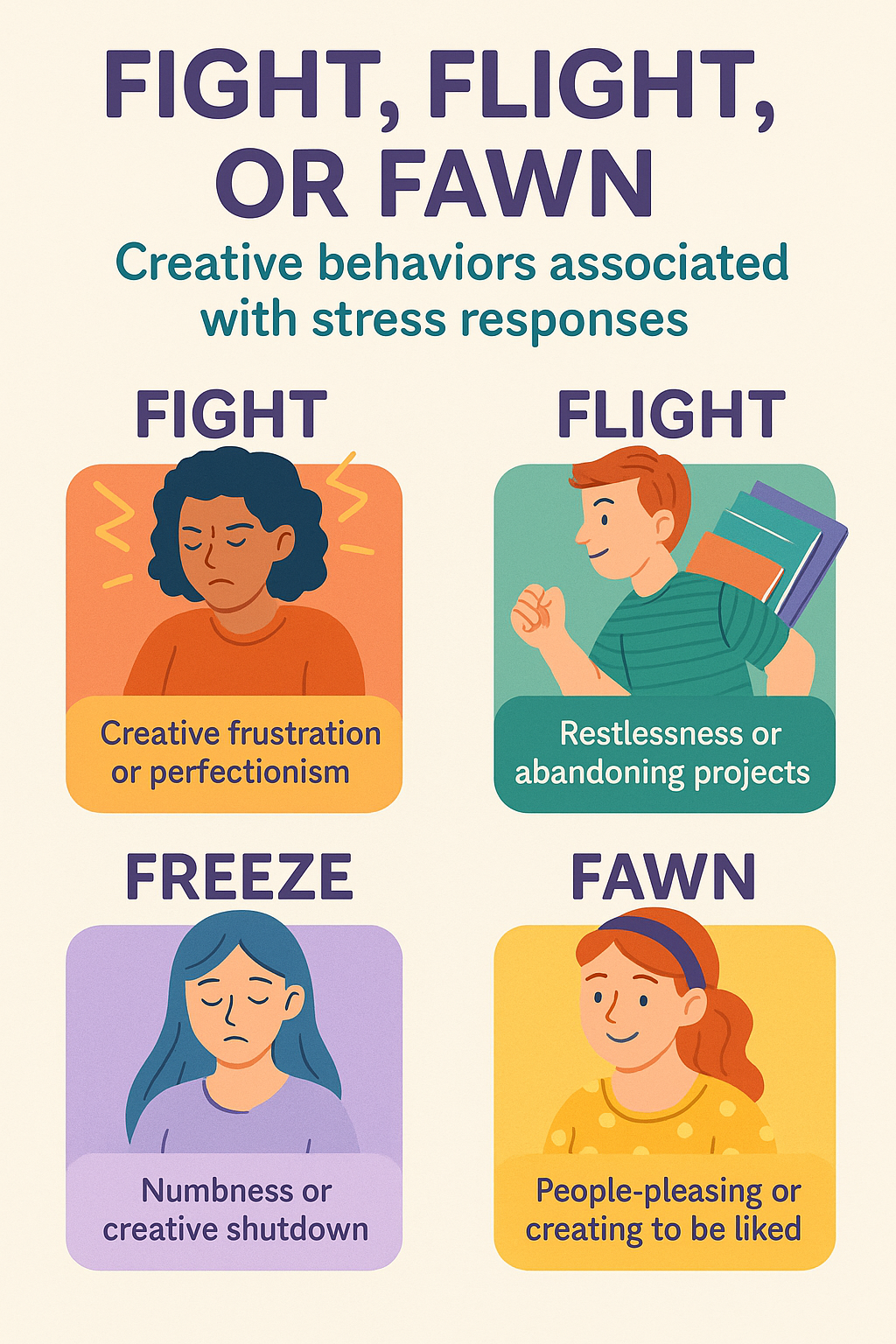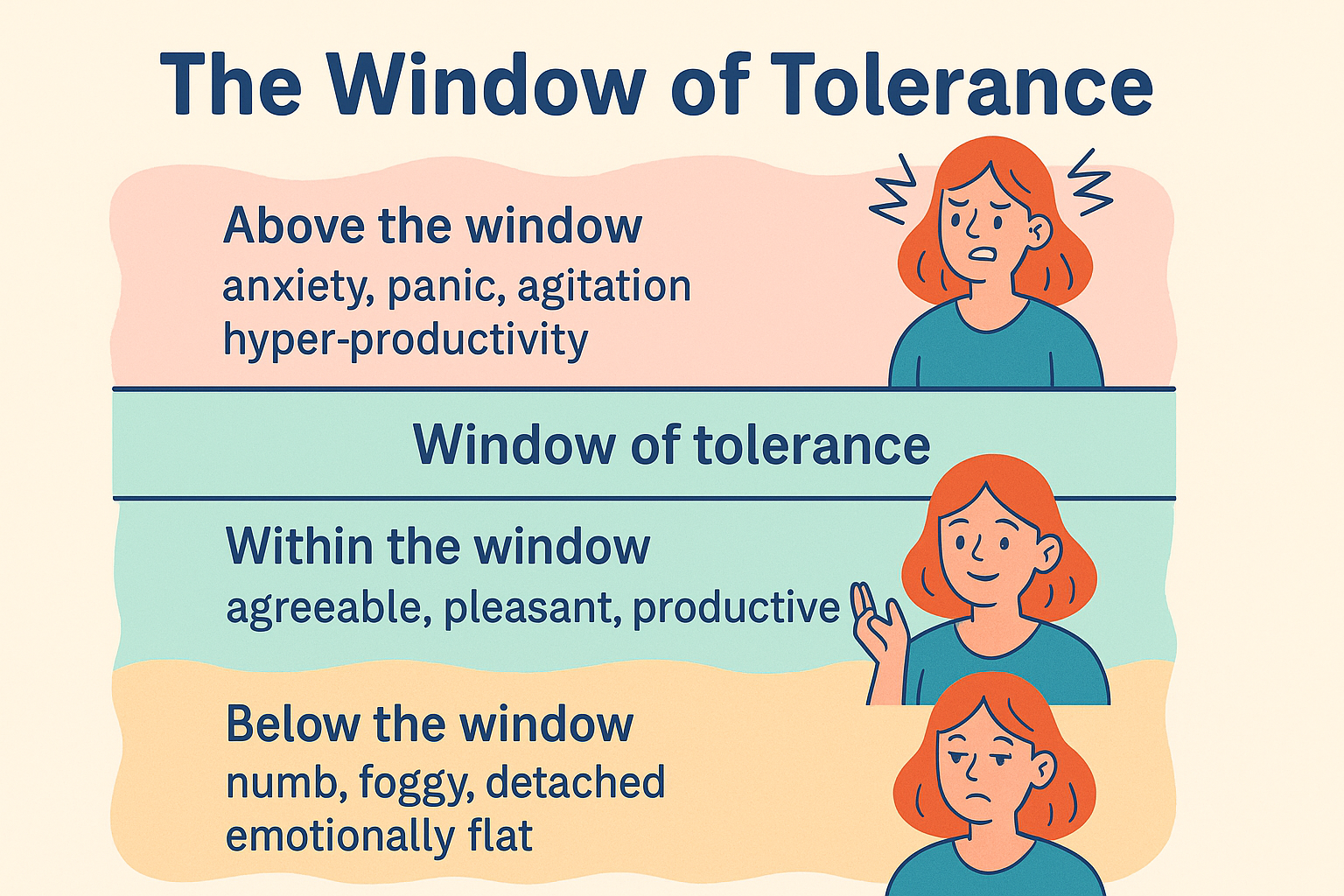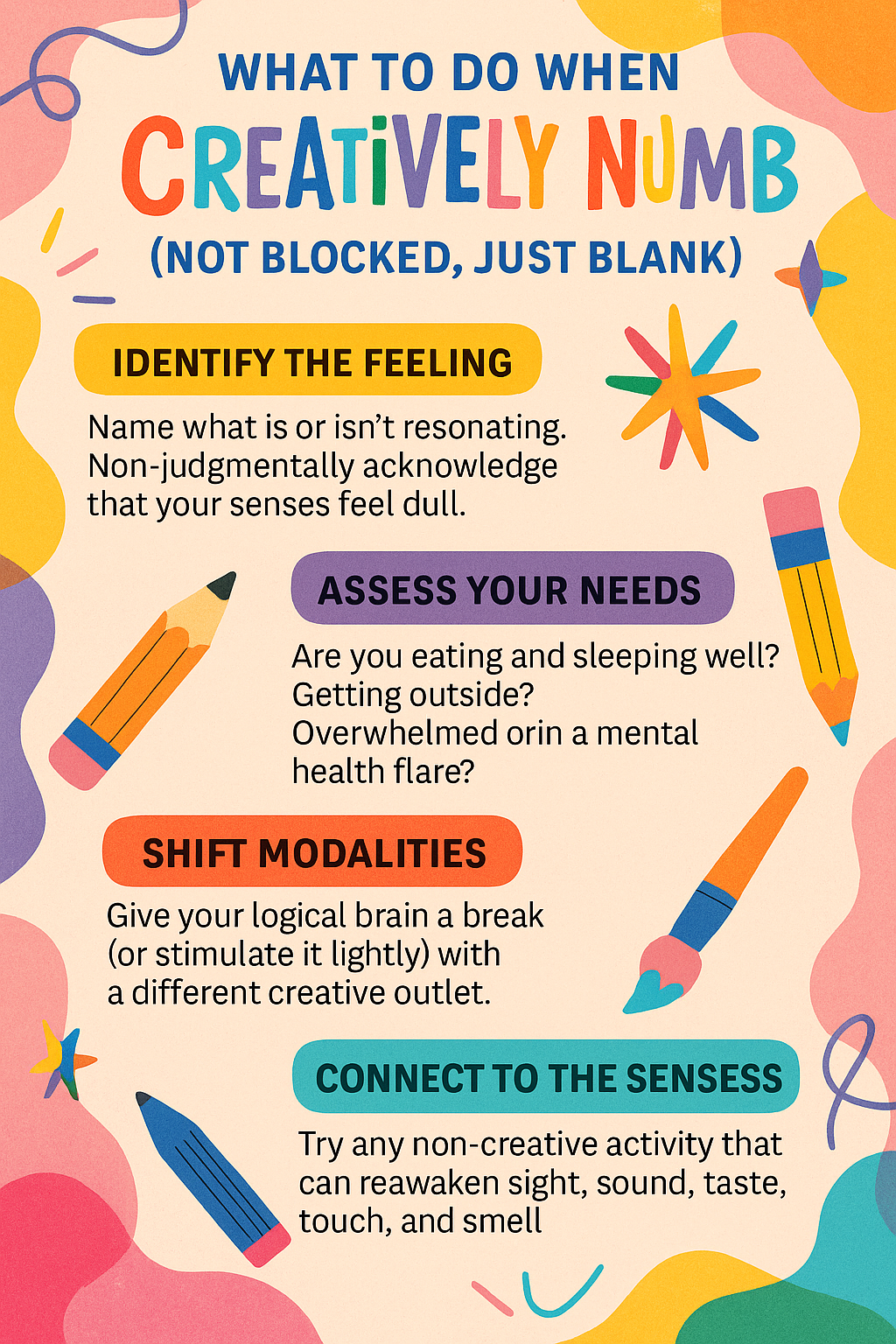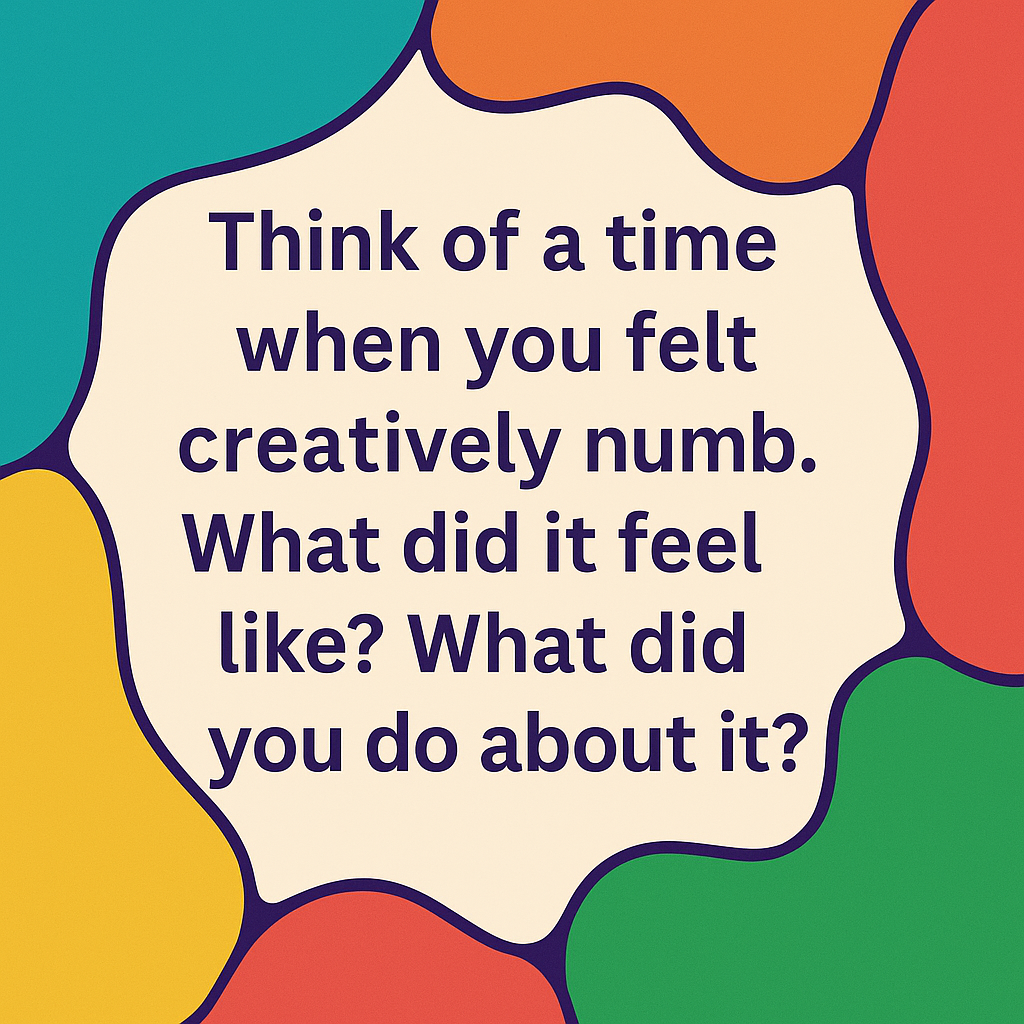
Understanding trauma responses in creative professionals and how to offer meaningful support
Creative people are often described as expressive, passionate, and emotionally driven. But what happens when they go quiet? What happens when the writer no longer writes, the artist avoids the studio, or the maker forgets what it feels like to create?
In my work as a creative wellness guide, I meet clients who aren’t creatively blocked in the traditional sense. They’re not resisting their work. They’re disconnected from it. They’re not overwhelmed by deadlines. They’re overwhelmed by silence. Many describe feeling numb, flat, or emotionally distant from the work that once brought them joy.
This isn’t procrastination. It’s not a lack of discipline. More often, it’s the result of a nervous system response, specifically, a trauma- or stress-induced freeze or fawn state.
Here’s how that works, and how I help clients find their way back.
When Creatives Shut Down: The Nervous System’s Role
Most people have heard of the “fight or flight” response, but those are only part of the body’s stress system. When a person perceives threat—whether physical, emotional, or psychological—the nervous system can also activate freeze or fawn states. These are especially common in people with trauma histories, chronic health conditions, or neurodivergence.
-
Freeze: The creative feels emotionally numb, foggy, and immobilized. They may report “not feeling like themselves” or describe sitting in front of their work with no internal response.
-
Fawn: The creative over-functions in response to perceived threat or rejection. This often looks like people-pleasing through art—creating to satisfy others, overcommitting to projects, or staying agreeable at the expense of authenticity.
These responses often place the person outside their window of tolerance, the emotional zone in which they can think clearly, feel safely, and engage creatively.

Why This Matters in Creative Work
For many artists, writers, and entrepreneurs, creativity is more than self-expression. It’s regulation. It’s meaning-making. When they lose access to that connection, it can trigger shame, self-doubt, and identity disruption.
Clients in freeze or fawn often tell me:
-
“I can’t remember why I cared about this project.”
-
“I feel emotionally blank.”
-
“I don’t feel blocked, I just feel gone.”
-
“I say yes to everything even when I’m too tired to create.”
These are not motivational problems. These are nervous system realities. And without the right kind of support, they tend to compound.
How I Support Clients Experiencing Freeze, Fawn, or Creative Numbness

My approach blends expressive arts techniques with principles from psychology, trauma-informed care, and narrative therapy. Here’s what that often looks like in session:
1. Nervous system education
We talk through what the window of tolerance is, how to recognize where they are in the stress cycle, and how that might be impacting their creative process.
2. Shame-free creative reframing
Instead of forcing productivity, we identify the protective function of the shutdown. Together, we reframe the client’s numbness as an invitation to rest, listen, or change direction—not a personal flaw.
3. Gentle sensory-based reentry
I help clients reconnect with creativity through low-pressure activities that reawaken tactile engagement, such as fiber work, collage, or voice journaling. This often builds the bridge back to deeper work.
4. Identity repair
When someone has been in freeze or fawn for a long time, their creative identity often suffers. We do the work of remembering who they are—not just through what they make, but through how they relate to the act of making.
This Work Is for Creatives and Those Who Support Them
I work with self-employed artists, full-time writers, therapists, neurodivergent creatives, and people returning to creativity after illness or trauma. My sessions are not therapy, but they are trauma-aware, compassionate, and based on an understanding of how health impacts art.
If you are a therapist or coach looking for creative-adjacent support for your clients, I also offer consultation and collaboration.
Book a Session or Reach Out
If you or someone you support is navigating creative numbness, identity disruption, or freeze states, I can help.
Book a Session with Me Today
Understanding is the first step. From there, we build a path back to creative connection that honors your nervous system and your truth.

Leave a Reply